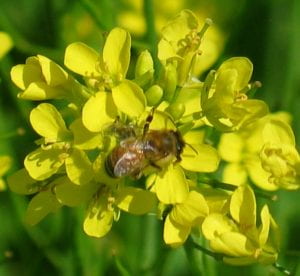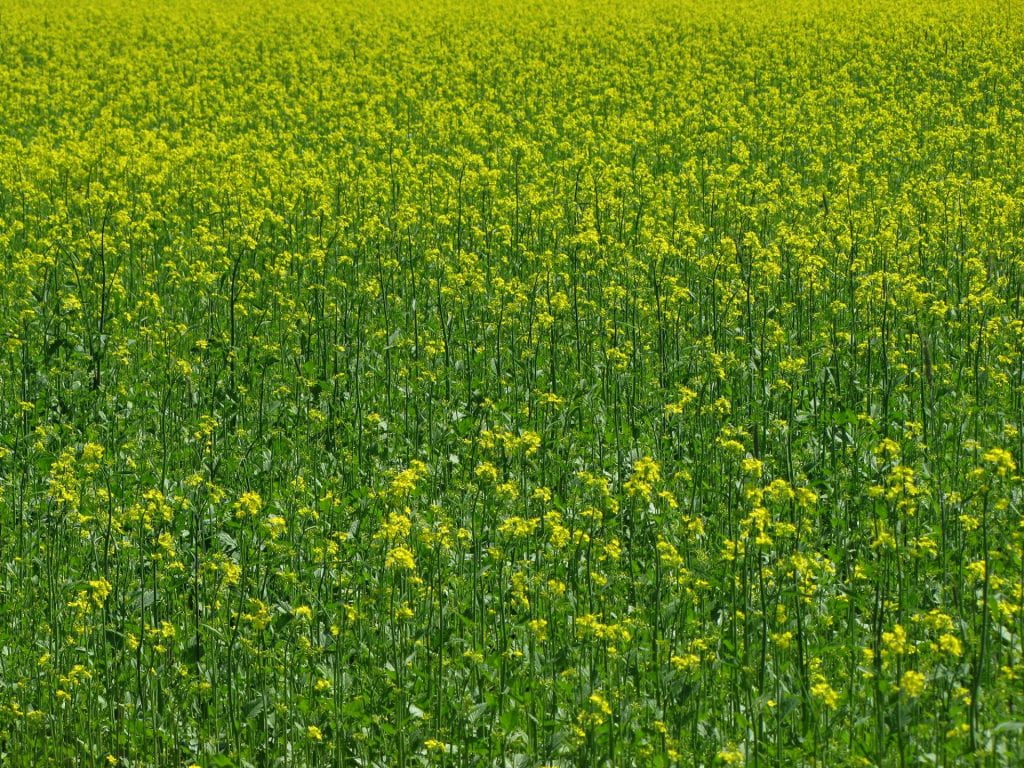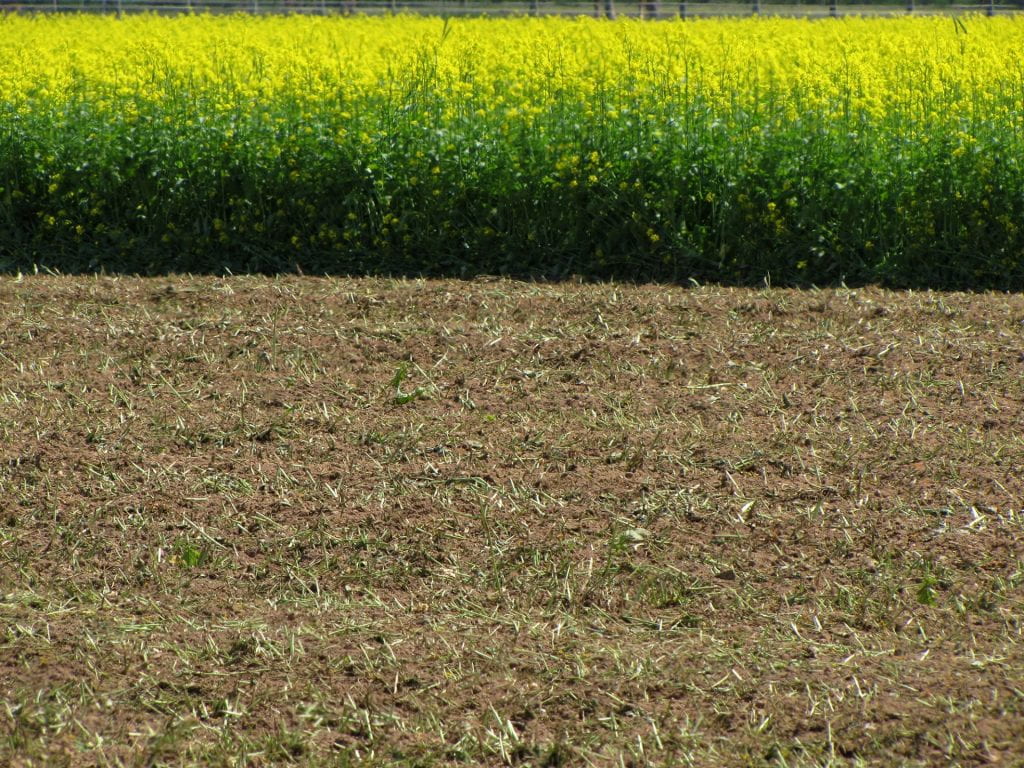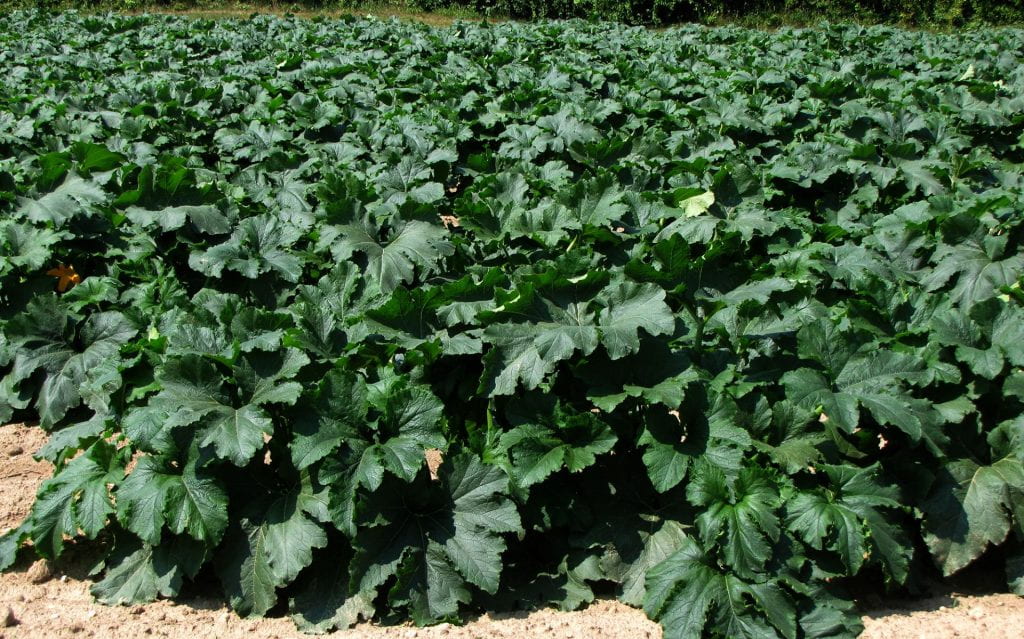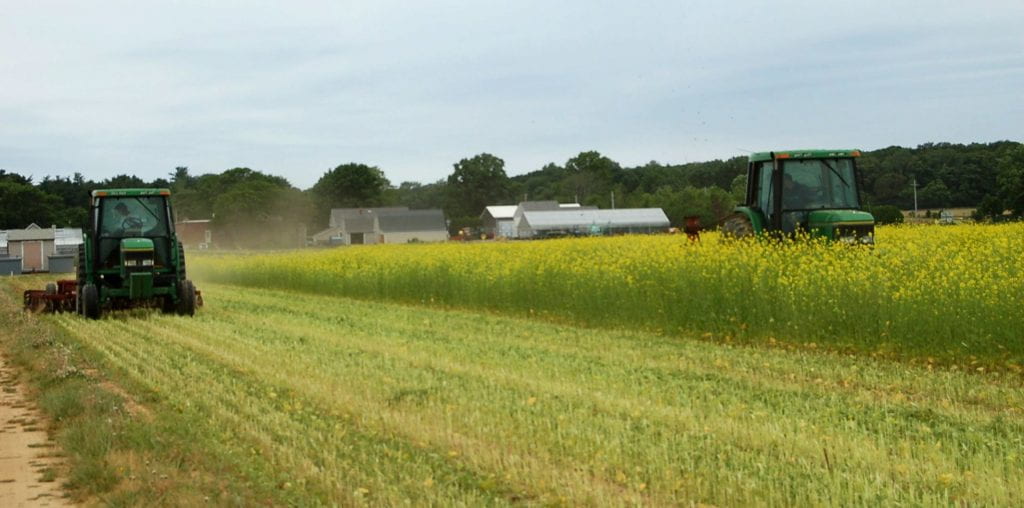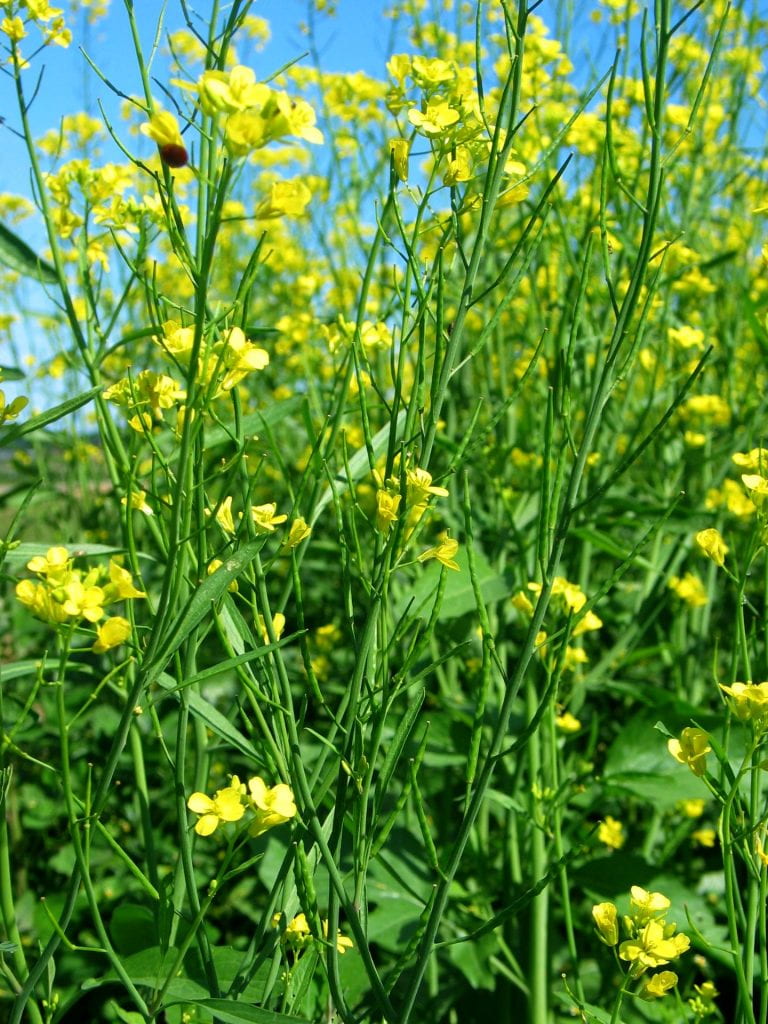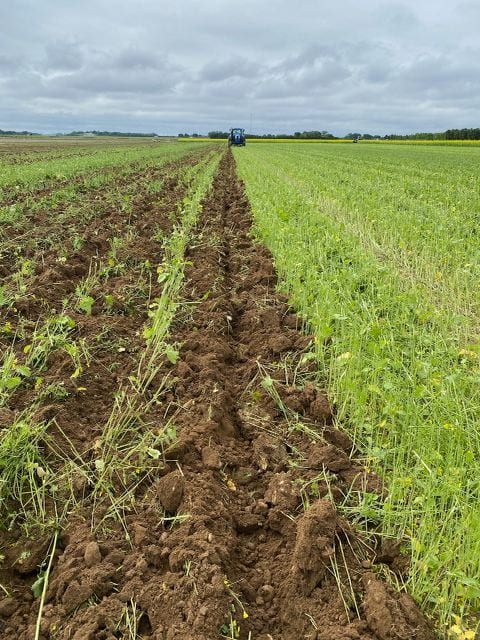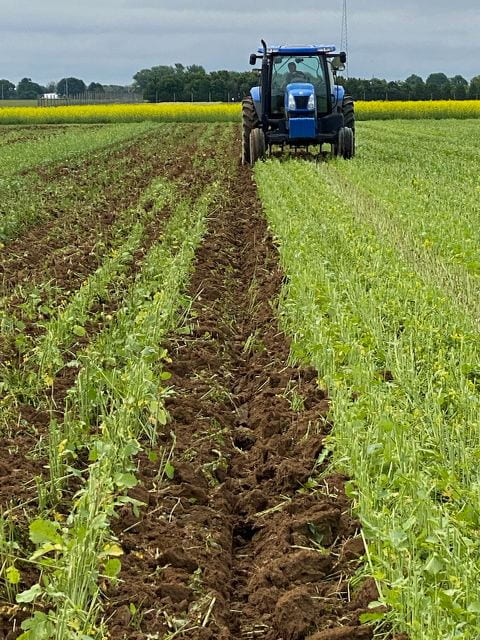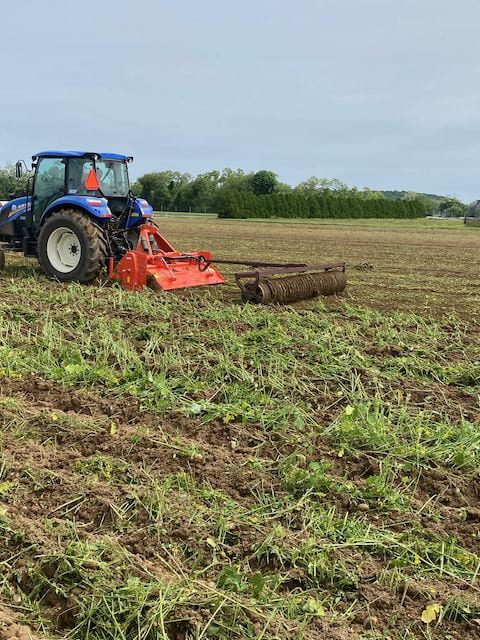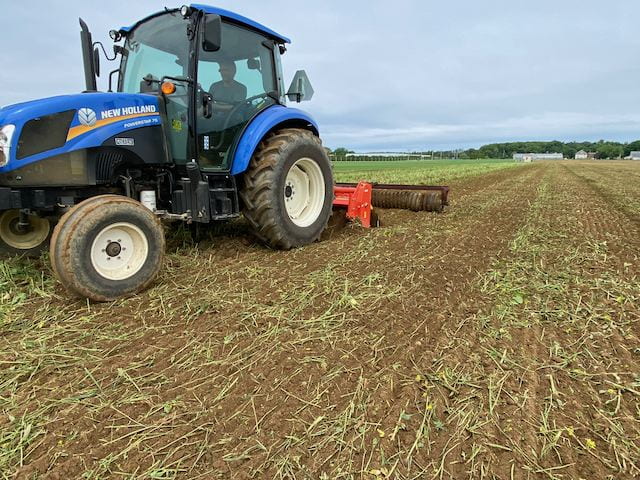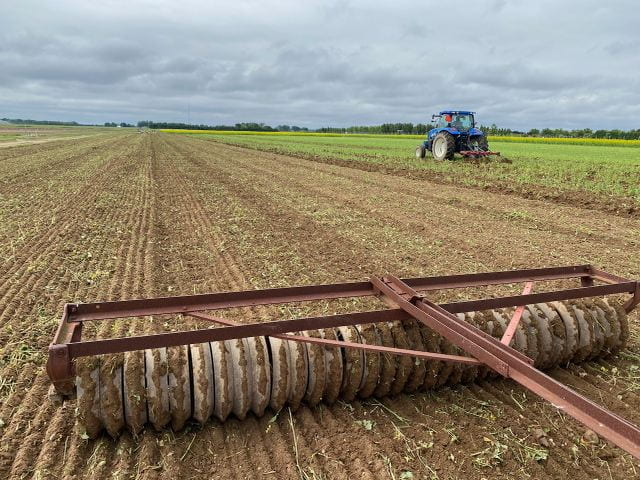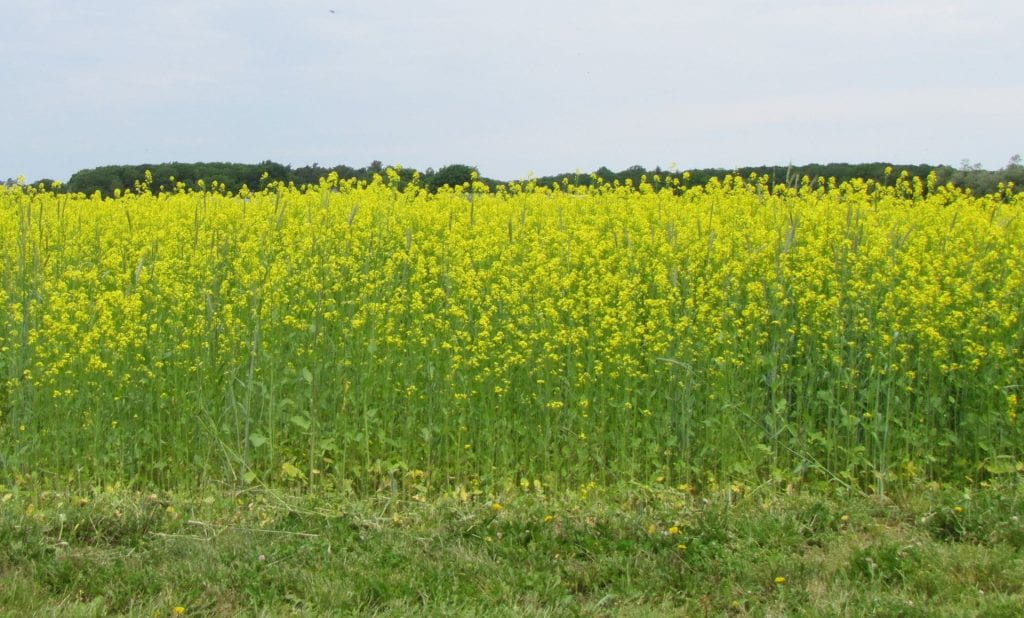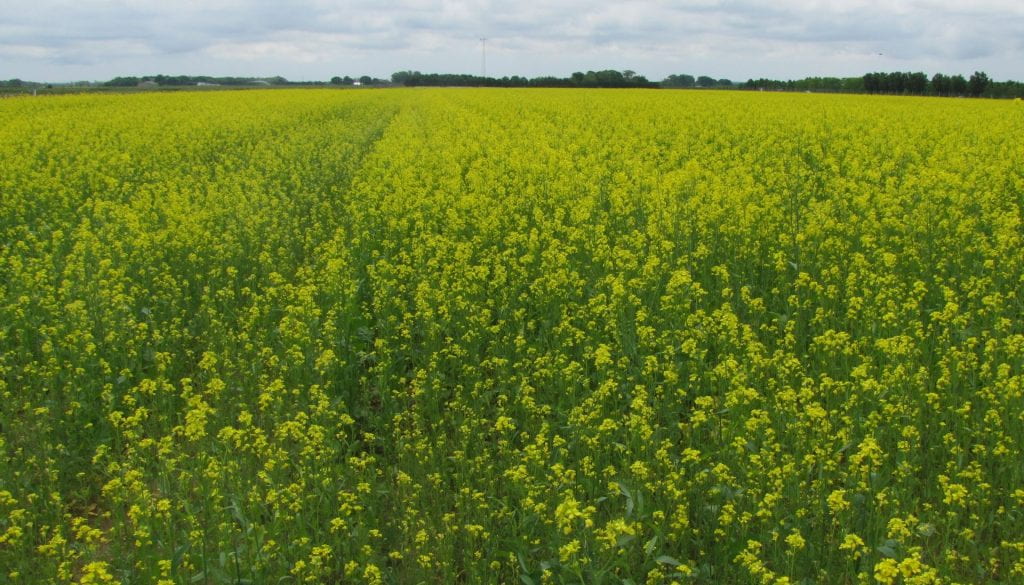Mustard plants produce glucosinolates, which breakdown as the plant decomposes into allyl-isothiocyanate, which is similar to methyl isothiocyanate, the active ingredient in the chemical fumigant Metam Sodium. Varieties have been developed with high glucosinolate levels for the purpose of biofumigation. Several seed companies now market them. Additionally, similar to other cover crops, when incorporated into soil the mustard plant tissue can increase water infiltration, soil tilth, and organic matter. Other types of plants have been used for biofumigation, including arugula, in particular the variety Nemat, targeting nematodes.
Keys to success include:
- selecting a mustard variety developed for biofumigation,
- seeding early in the year (as soon as ground can be prepared) when preceding summer crop,
- applying fertilizer at minimum 50 lb/A nitrogen with sulfur if level in soil is low,
- preparing good seed bed,
- drilling seed rather than broadcast,
- providing irrigation when rainfall is inadequate,
- flail chopping thoroughly (good equipment recommended) when mustard is flowering, soil is moist and temperature is cool (e.g. cloudy morning),
- incorporating immediately (within 20 minutes of chopping, which necessitates having a second tractor following the one with the flail mower) to minimize loss of isothiocyanate which is volatile,
- sealing the surface (e.g. with cultipacker) to minimize loss of isothiocyanate,
- irrigating if rain not imminent to promote biofumigation (water is needed because hydrolysis is the reaction step that transforms glucosinolate into isothiocyanate), and
- disking lightly before planting at least 7 days later to release any residual fumigant gas as well as manage any weeds that germinated.
- also use biofumigation as a component of a management program that includes other cultural practices and fungicides.
It is important to apply fertilizer and water as needed to maximize biomass produced which will increase biofumigation. Seed start to mature about 6 weeks after the onset of flowering thus there is a long time period when incorporation can be done before risk of re-seeding. Mustard will continue to grow during early flowering period, further increasing biomass. Flowers are attractive to pollinators and beneficials. An ideal day for performing biofumigation is one with cloudy morning (thus cool) and high probability of rain later in day. Implementing biofumigation does not exclude use of reduced tillage for managing Phytophthora blight: these practices can be used in alternate years, which was the topic of a NESARE project conducted on farms.
More information:
Below: Mustard cover crop used to biofumigate for managing Phytophthora blight in pumpkin crop at a farm on Long Island.
Below: Incorporating mustard for biofumigation on 12 June 2012 just before rain forecast in a research field at LIHREC where Phytophthora blight was severe the previous year.
Below: Mustard seed matures slowly over about 6 weeks. progressing from green and easy to squash with a fingernail to hard and dark brown to black when mature. Thus reseeding due to incorporating after seed has matured is generally not an issue. Monitor maturity of seed inside oldest (lowest) pods when incorporation will be several weeks after start of flowering.
Below: Incorporating mustard for biofumigation on 3 June 2022 in a research field at LIHREC. Immediately following flail mowing, the chopped mustard is partially incorporated by chisel plowing, followed by rototilling and sealing the soil surface with a cultipacker. The chisel plow step was added because it is faster than the rototiller and makes the rototilling easier. After 1-2 weeks, the field will be disked and then seeded to pumpkin. Photographs were taken by Andy Senesac, Weed Scientist with Cornell Cooperative Extension-Suffolk County.
Below: Mustard biofumigant cover crop ‘Rojo Caliente’ taken on 3 June 2022, the same day that it was incorporated. Average mustard height on this date was 47 inches. Flowers were first seen on 23 May 2022.
More information/prepared by:
Margaret Tuttle McGrath
Associate Professor Emeritus
Long Island Horticultural Research and Extension Center (LIHREC)
Plant Pathology and Plant-Microbe Biology Section
School of Integrative Plant Science
College of Agriculture and Life Sciences
Cornell University
mtm3@cornell.edu



